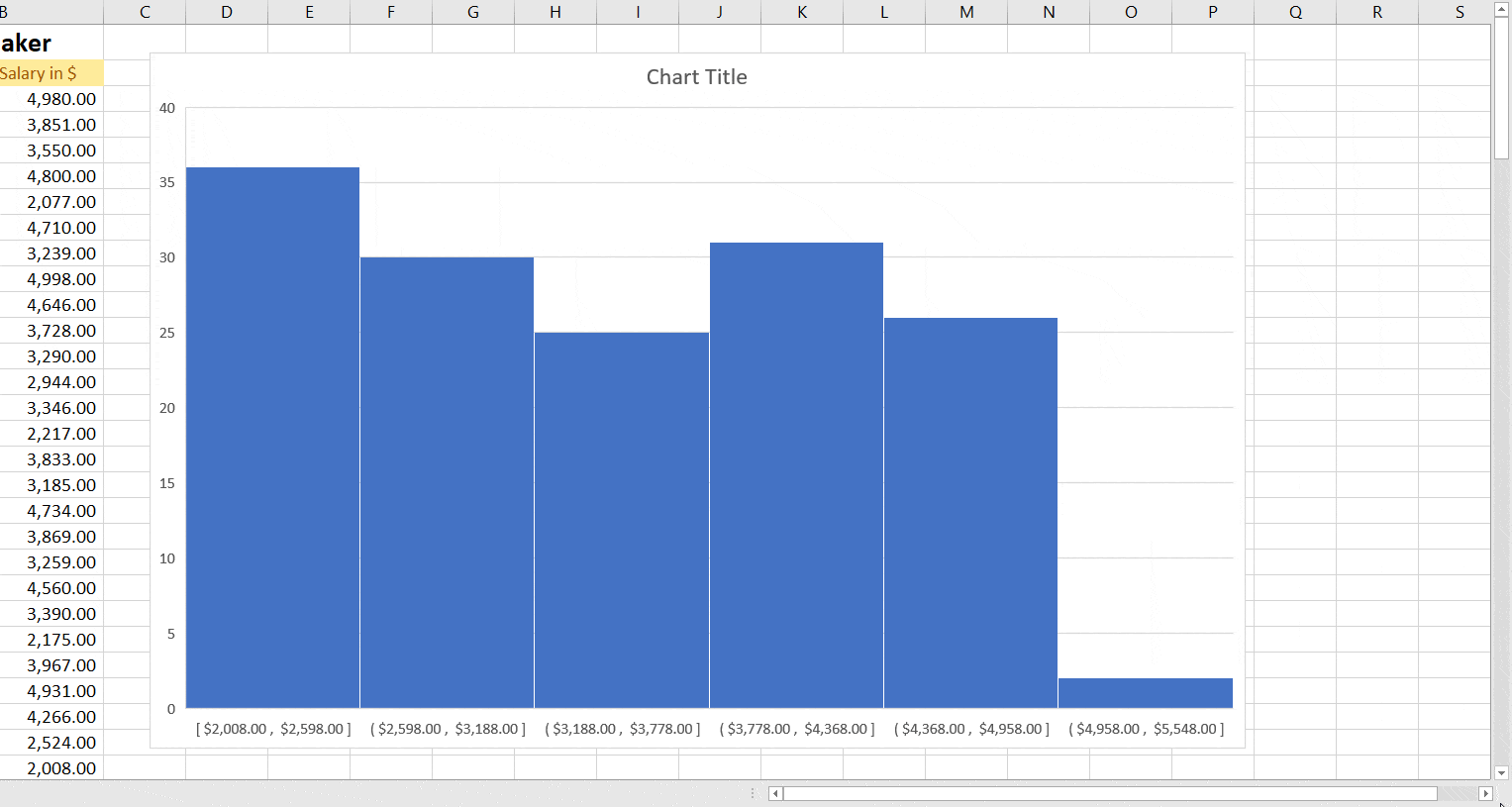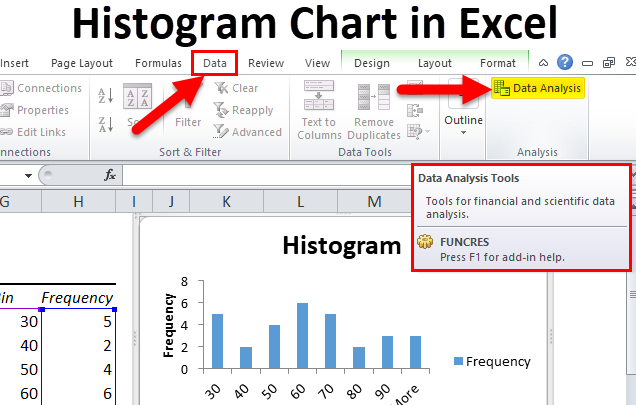
Interpreting Excel Bin LabelsĮxcel uses standard statistical notation on labels for the bin ranges on the horizontal axis.


The “K” is simply a tacked-on suffix used to help the reading understand the true value of the axis. If you added 2 commas, the number would be rounded to the nearest million 3 commas would round to the nearest billion, etc. The way this works is that if you place a single comma after the zero instead of a period ( decimal point), the number will be rounded to the nearest thousand. In the Format Code field, enter the following code and press the Add button. To make more efficient use of the X-Axis label space, double-click the X-Axis to open the Format Axis panel. With number ranges as large as we’re working with, we spend a large amount of real estate currency on the excessive zeroes in the X-Axis labels.
Increase the font size of the data labels for better readability. The final touches to the Histogram chart are as follows: The purpose of the Underflow bin is to capture all values below a certain range.įor our chart, we will define the Underflow bin to hold all values under 30K. The purpose of the Overflow bin is to capture all values over a certain range.įor our chart, we will define the Overflow bin to hold all values over 200K. If we set the Bin Width to 40,000, the result is 6 bins ranging from approximately 21K to 261K in increments of 40K. To decide on the strategy and set the parameters, double-click the values along the X-Axis ( or single-click the values and press CTRL-1) to reveal the Format Axis panel. NOTE: “Automatic” is another option, but it rarely proves useful. We can define the bin logic in two ways: either by the width of the bins ( i.e. The groupings of data points are known as “bins”. We will improve the chart with the following modifications: Setting the Bin Width The result is technically a Histogram chart, but it doesn’t really tell the story in the way we need. Click Insert (tab) -> Charts (group) -> Insert Statistics Chart -> Histogram. Select a cell in the desired data range. To create the Histogram chart, perform the following steps: This is the perfect opportunity for a Histogram to shine like the star it is. “Given five salary ranges, how many employees receive a salary within each salary range?” We want to answer the following question: You are likely to end up with something that looks like the following.Īlthough this chart does display the information and given enough time you could decipher relevant information about the salaries, the time it would take is likely more than you care to invest. …and charting the yearly salaries for all employees. Imagine taking a dataset like the following…






 0 kommentar(er)
0 kommentar(er)
